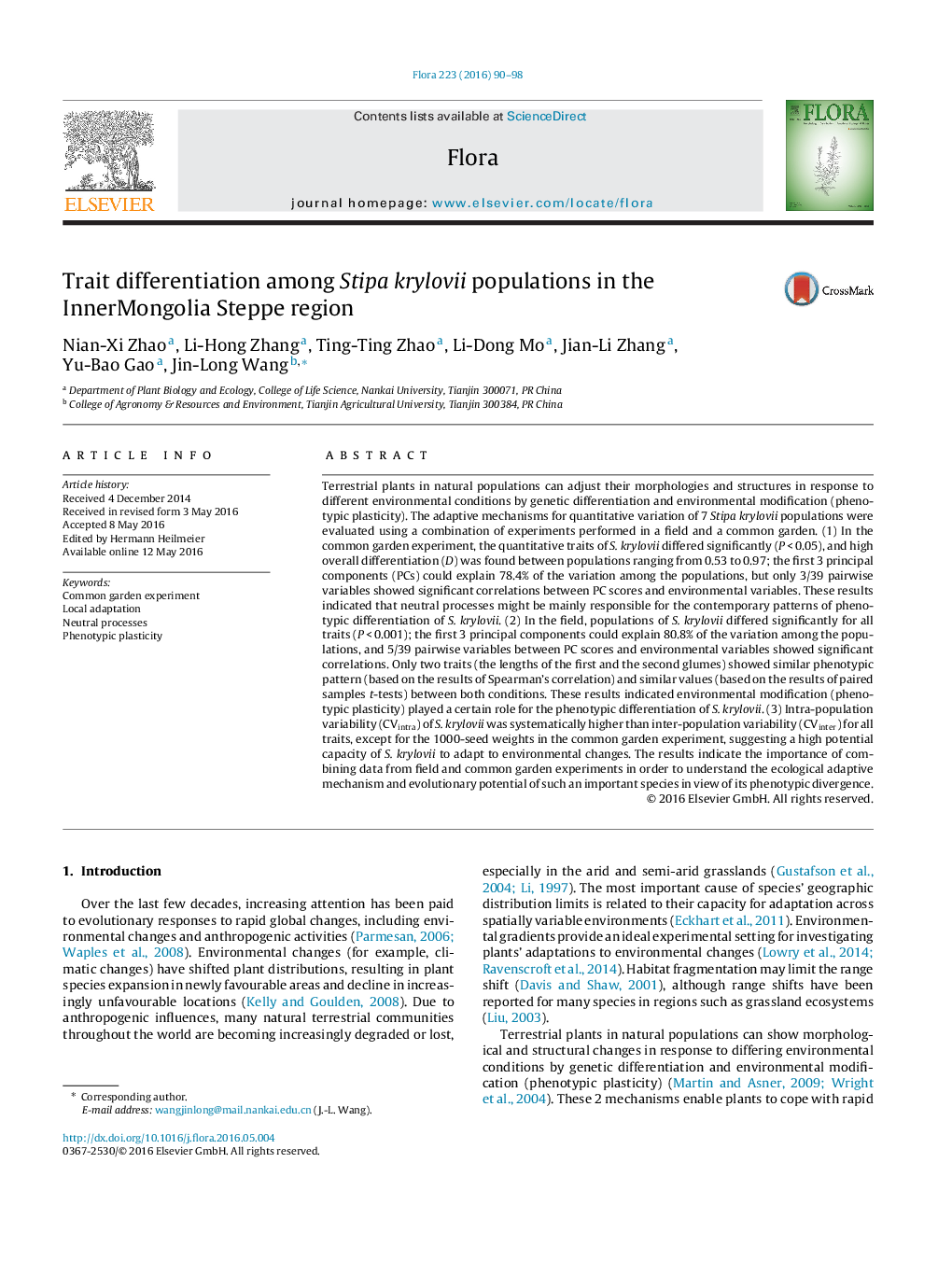| Article ID | Journal | Published Year | Pages | File Type |
|---|---|---|---|---|
| 8470278 | Flora - Morphology, Distribution, Functional Ecology of Plants | 2016 | 9 Pages |
Abstract
Terrestrial plants in natural populations can adjust their morphologies and structures in response to different environmental conditions by genetic differentiation and environmental modification (phenotypic plasticity). The adaptive mechanisms for quantitative variation of 7 Stipa krylovii populations were evaluated using a combination of experiments performed in a field and a common garden. (1) In the common garden experiment, the quantitative traits of S. krylovii differed significantly (PÂ <Â 0.05), and high overall differentiation (D) was found between populations ranging from 0.53 to 0.97; the first 3 principal components (PCs) could explain 78.4% of the variation among the populations, but only 3/39 pairwise variables showed significant correlations between PC scores and environmental variables. These results indicated that neutral processes might be mainly responsible for the contemporary patterns of phenotypic differentiation of S. krylovii. (2) In the field, populations of S. krylovii differed significantly for all traits (PÂ <Â 0.001); the first 3 principal components could explain 80.8% of the variation among the populations, and 5/39 pairwise variables between PC scores and environmental variables showed significant correlations. Only two traits (the lengths of the first and the second glumes) showed similar phenotypic pattern (based on the results of Spearman's correlation) and similar values (based on the results of paired samples t-tests) between both conditions. These results indicated environmental modification (phenotypic plasticity) played a certain role for the phenotypic differentiation of S. krylovii. (3) Intra-population variability (CVintra) of S. krylovii was systematically higher than inter-population variability (CVinter) for all traits, except for the 1000-seed weights in the common garden experiment, suggesting a high potential capacity of S. krylovii to adapt to environmental changes. The results indicate the importance of combining data from field and common garden experiments in order to understand the ecological adaptive mechanism and evolutionary potential of such an important species in view of its phenotypic divergence.
Related Topics
Life Sciences
Agricultural and Biological Sciences
Ecology, Evolution, Behavior and Systematics
Authors
Nian-Xi Zhao, Li-Hong Zhang, Ting-Ting Zhao, Li-Dong Mo, Jian-Li Zhang, Yu-Bao Gao, Jin-Long Wang,
